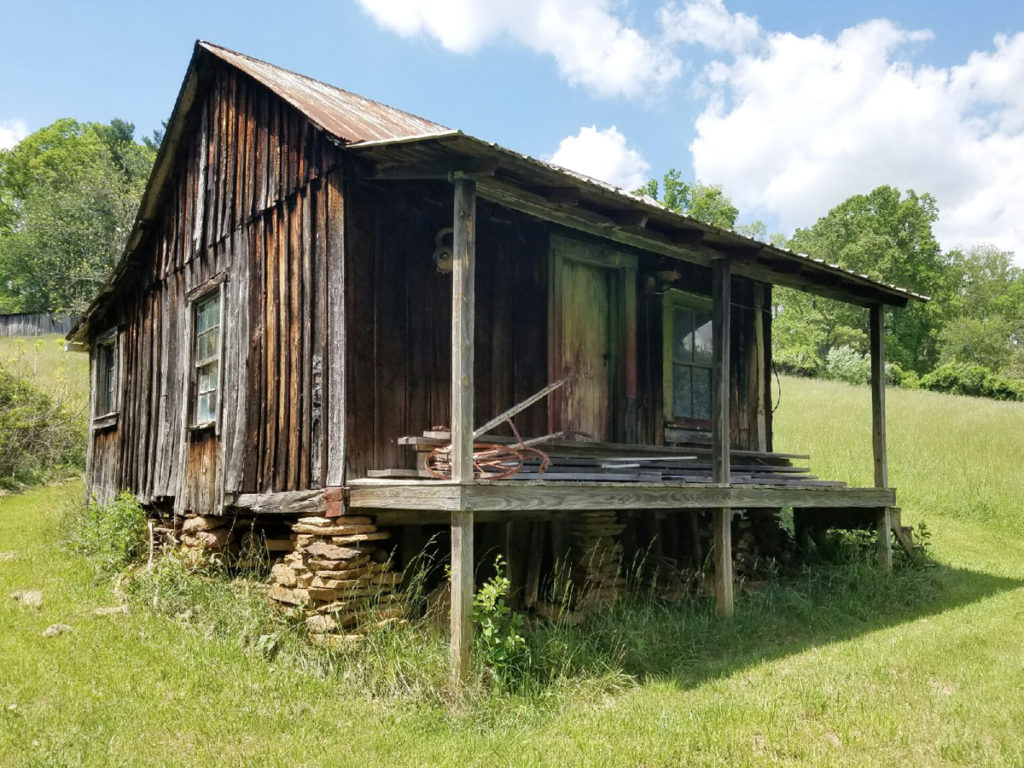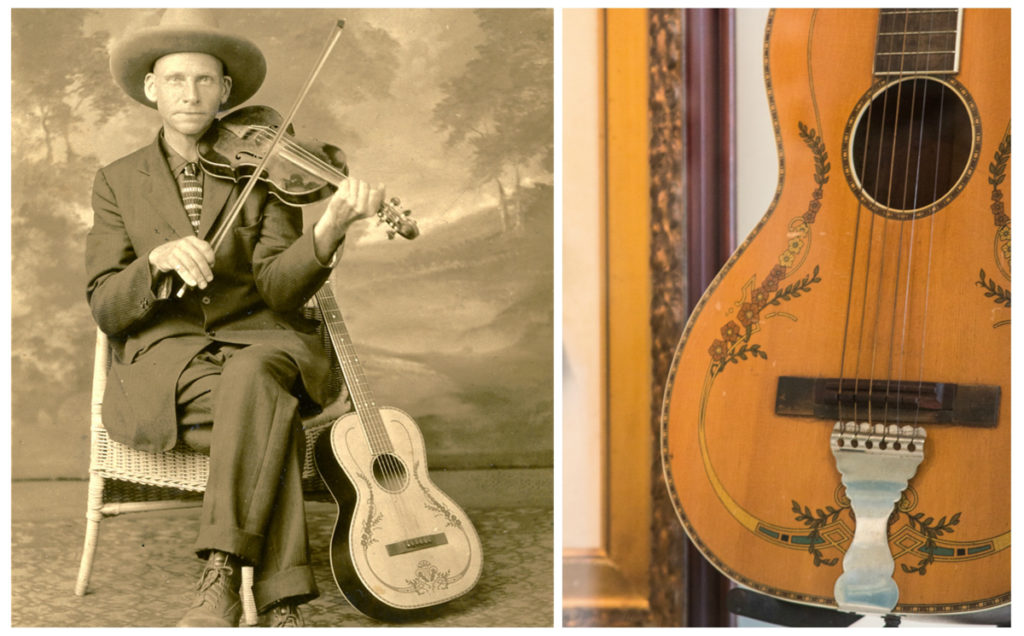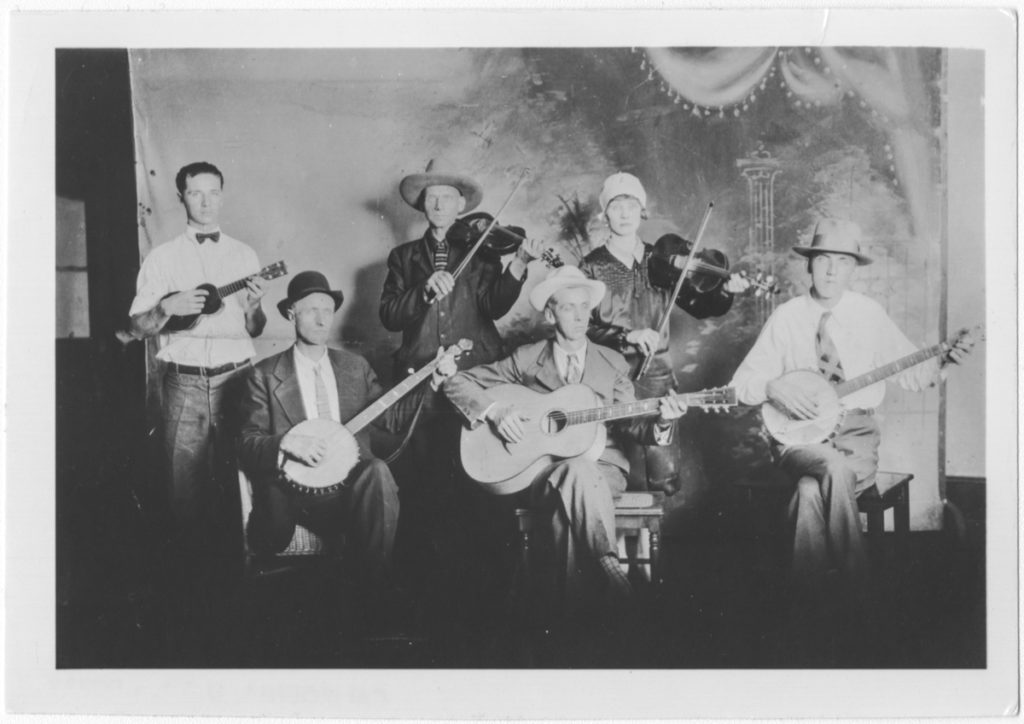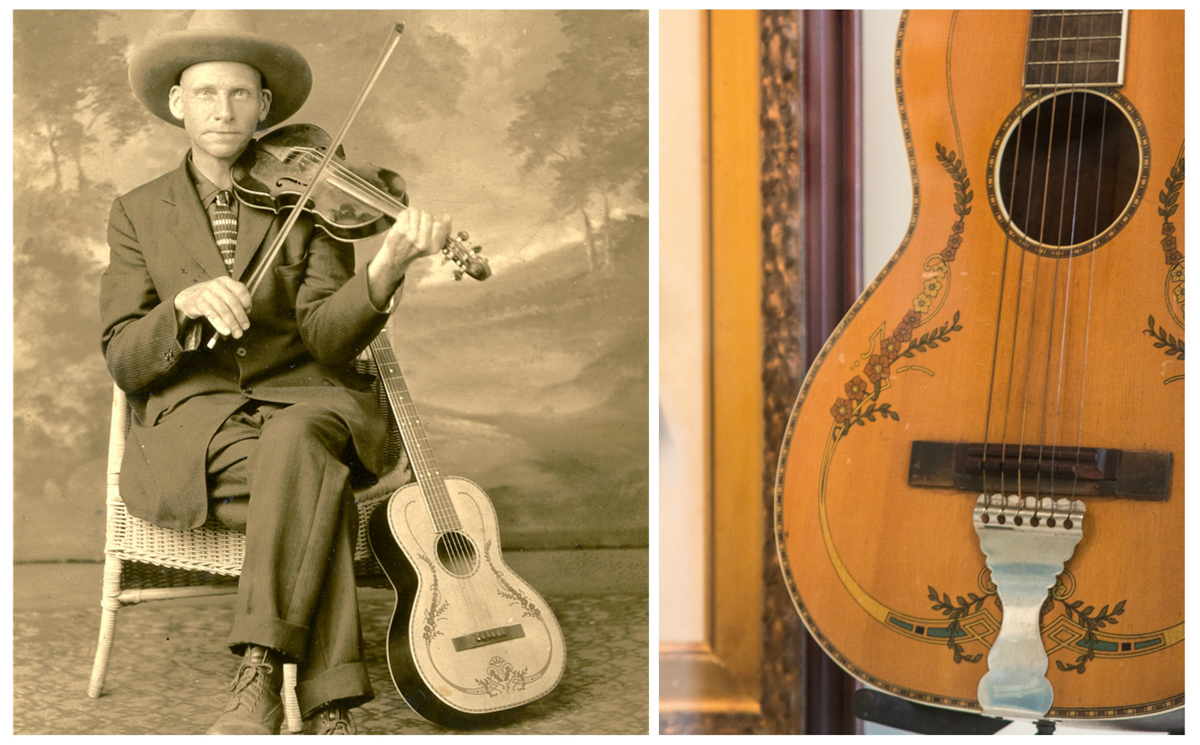Meeting Uncle Eck Dunford must have been quite an experience. While there aren’t many accounts of his life and times, the ones I’ve found – and the stories I’ve been told – point to a man who was full of character and personality.
He was born Alex Dunford on May 30, 1875 in Ballard Branch near Galax, Virginia; interestingly he has two recorded birth dates – 1875 and 1878 – but the 1875 one is from his tombstone and therefore that’s the one I’ve picked! Several sources tell us that Uncle Eck was a bit of an eccentric, wearing an overcoat and overshoes in all seasons, no matter the weather, and adding pink earmuffs when the temperatures turned cold. He also spoke in a distinctive voice, one that has been attributed to a possible Scots-Irish dialect. He was known for his jokes, but he also stood out from others in the Galax area when he frequently quoted Shakespeare and Robert Burns, pointing to a man who took the time and the interest to read and educate himself.
At the turn of the 20th century, Uncle Eck built a cabin in Galax made up of one big room and a kitchen out back, and this was his home until he passed away in 1953. A large number of pictures – on glass plate negatives – were found in his cabin after his death, along with a tripod and other photographic equipment; unfortunately many of these photographs have now been lost. As an amateur photographer, Uncle Eck seemed to focus on pictures of the everyday life around him in Galax, though it’s not known whether he took photographs to sell or simply for pleasure. One of his photographs of a logging group was used on a County Record label; another picture – this time of several Galax musicians – was used by Mike Seeger and John Cohen on the cover of The New Lost City Ramblers Song Book. Uncle Eck also worked as a shoe cobbler, and a Singer leather sewing machine was also found in the cabin.

However, Uncle Eck is really known for music. He was a highly skilled fiddler, guitarist, and storyteller, and he played with a host of other musicians and bands. He is especially known for his musical connections with Ernest “Pop” Stoneman; he even married into the family when he wed Callie Frost, a relative of Hattie Stoneman’s. The first time that Uncle Eck recorded was in 1927 at the Bristol Sessions, and he sang or played (or both) on several sides with different Stoneman configurations – “Mountaineer’s Courtship” with Irma Frost and Stoneman, several sides including “Are You Washed in the Blood” and “I Am Resolved” with Ernest Stoneman & His Dixie Mountaineers, “What Will I Do, For My Money’s All Gone” with Hattie, “Barney McCoy” with Stoneman, and “Old Time Corn Shuckin’” with the Blue Ridge Corn Shuckers. Uncle Eck also recorded two sides by himself – “The Whip-poor-will’s Song” and the familiar children’s tune “Skip to Ma Lou, My Darling,” with the 1927 recording being its first commercial outing.

His appearance on the “Old Time Corn Shuckin’” song with and his unusual way of speaking brought his comedic talent to the fore. Based on this, Ralph Peer invited Uncle Eck to Atlanta later that year to record four comic monologues, including two that were listed as original compositions – “Sleeping Late” and “The Taffy Pulling Party.” Well-written lyrics obviously make a song skit funny, but Uncle Eck’s language, his timing and delivery, and the emphases he put on certain words underlined their comic value. He recorded two other skits with Stoneman in February 1928, again in Atlanta. One of these – “Possum Trot School Exhibition” – detailed the misadventures during a Southwest Virginia mountain school’s activity day. In October 1928, Uncle Eck was back in Bristol with the Stonemans when they recorded “Going Up the Mountain after Liquor,” amongst others, another song where Uncle Eck’s comedic talents were heavily featured.
Uncle Eck was part of several other recording sessions with Stoneman, and he recorded a couple more solo numbers at the 1928 Bristol Sessions – “Old Shoes and Leggings,” which was later featured on Harry Smith’s Anthology of American Folk Music, and “Angeline the Baker,” an Appalachian standard. But he also played fiddle and guitar with other local groups in the 1920s and 1930s including the Bogtrotters and the Grayson County Railsplitters, and there were probably other instances where he was never listed as one of the band members.

Oscar Hall, an organizer of the Galax Old Fiddlers’ Convention, knew Uncle Eck in his later years – his wife’s parents were family friends and took care of him until he died on June 26, 1953. Towards the end of his life, Mr. Hall says Uncle Eck was still playing his guitar, and playing it pretty well, and he even got the chance to play with him some.
Learning about Uncle Eck for this post has obviously underlined his musical talents, but learning about Uncle Eck the man has been the most interesting part. A final story told to me by Mr. Hall is definitely my favorite. According to Mr. Hall, whenever Uncle Eck headed back over the hill to his cabin after a visit with his wife’s parents, their goose would follow him home, flying back once the trip home was finished. And that’s the picture I now have in my mind: of Uncle Eck walking home, perhaps to play a bit of music, with a goose following close behind him.
René Rodgers is the Curator of Exhibits & Publications at the Birthplace of Country Music Museum. Special thanks to Roddy Moore at the Blue Ridge Institute & Museum in Ferrum, Virginia, and Doris Brown and Oscar Hall of Galax, Virginia, for their help with this post.


